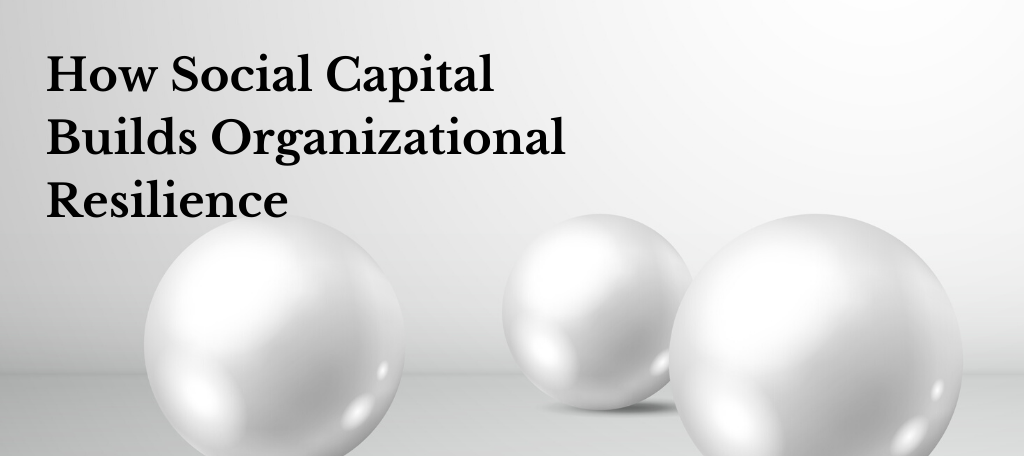Resilience is the ability to bounce back, and even bounce forward, in times of adversity. Individual attributes can be developed to strengthen one’s resilience, but a group of resilient individuals does not equate to a resilient organization. There are different factors at play once you consider resilience within a system of interrelatedness and interdependencies. As it turns out, it is the interrelations and interdependencies that matter most in building resilience. Within any organization, there are many forms of capital: economic capital, human capital, physical capital, and social capital. Social capital has been shown above any other form of capital to be critical in building resilience.
Social capital refers to the resources embedded within one’s network.
At your last strategic planning session or SWOT analysis, did you actually identify a pandemic as a likely threat to your organization? Or did you even consider that some other health epidemic could become a reality? Planning and anticipating will only get us so far. We need to learn how to be agile and pivot in challenging times. This is difficult on an individual level, but even more so on an organizational level. How, then, do you develop the ability to bounce back?
The simple answer is that you build resilience.
Organizational Bounce is a unifying framework to build organizational resilience against disruption and dysfunction. External threats to an organization, such as market shifts, technological advances, and competitive landscapes, are considered disruptors that can take down an organization that lacks resilience. Similarly, internal threats within an organization, typically related to dysfunctional dynamics, can also take down an organization that lacks resilience. Although we always want to plan for and anticipate threats, there are many times we are impacted by a threat that we had never considered.
You’ve heard the saying, “it’s not what you know, but it’s who you know.”
Well, that is true. Your connections, interactions, values, trust, leadership, and engagement are all related to social capital. Specifically, social capital is mobilized through three dynamics: (a) bonding; (b) bridging; and (c) linking. Bonding refers to the connections you have with those who are similar and with whom you are close. Within an organization, this would be the people who are on your team and closely situated to you. Bridging refers to the connections with those who are dissimilar from you, a heterogeneous group. This could be people who work in different departments and are diverse in terms of age, gender, income, and race. Lastly, linking refers to the people who can be supportive in hierarchical structures, the decision-makers and influencers who can link you to other resources and supports.
In order to build social capital and strengthen the interrelationships, key levers that support connections, clarity, capacity, and commitment are crucial. We know that working in silos and not having team cohesion or organizational alignment can cause toxic environments with higher turnover and a loss of productivity. It is within this dynamic that an organization is most vulnerable to further disruptions and dysfunctions. Proactively building resilience (and managing the toxicity) through social capital offers the solution to achieve optimal organizational performance and profitability.




